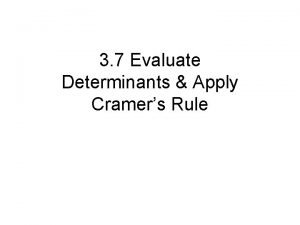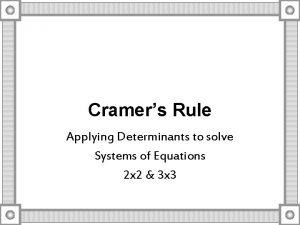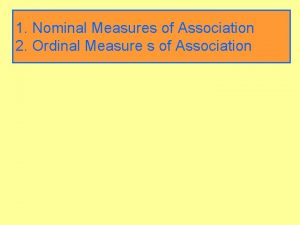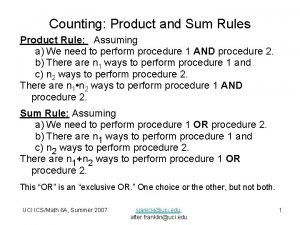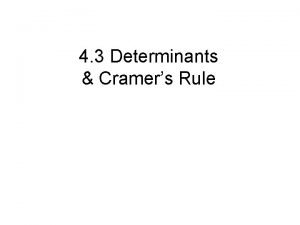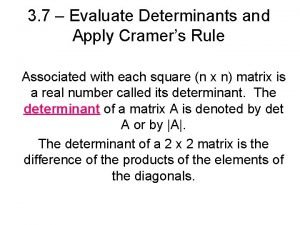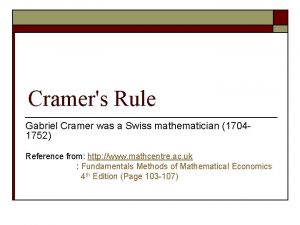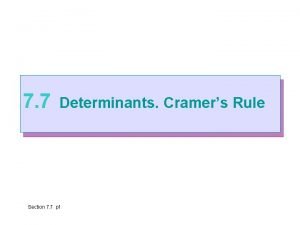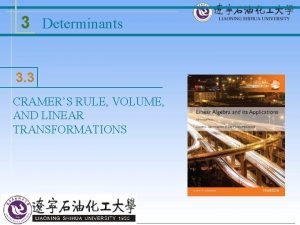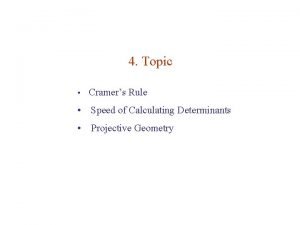Lesson 16 Cramers rule Cramers rule is a











- Slides: 11

Lesson 16 Cramer's rule

Cramer's rule is a method for solving systems of linear equations using determinants. The solution of the linear system: ax + by = e cx + dy = f are x= e b y= a e f d c f D D , where D is the determinant of the coefficient matrix

Coefficient matrix This matrix is the coefficients of x and y in the given equations a b c d

Using Cramer's rule Solve 3 x + 2 y = -1 4 x - 3 y = 10 The coefficient matrix is 3 2 4 -3 x= -1 2 y = 3 -1 10 -3 4 10 3 2 4 -3 x = 3 -20 = -17 =1 y = 30+4 =34 = -2 -9 -8 -17 so solution is (1, -2)

Solve x+y=1 x + 2 y = 4 x= 1 1 y= 4 2 1 1 1 2 x= 2 -4 = -2 2 -1 1 So solution is (-2, 3) 1 1 1 4 1 1 1 2 y = 4 - 1= 3 2 -1 1

undefined If the determinant of the coefficient matrix is 0, it makes the denominator of the solutions 0, which makes the solution undefined.

Classifying systems by their solutions 1) if D is not equal to 0, the system has 1 unique solution. ( consistent) 2) if D = 0, but neither numerator is 0, the solution has no solutions (inconsistent) 3) if D = 0 and at least one of the numerators is 0, the system has an infinite number of solutions (dependent and consistent)

Interpreting a denominator of 0 3 x + 2 y = 5 3 x + 2 y = 8 x = 5 2 10 -16= -6 8 2 6 -6 0 3 2 y=3 3 5 24 -15=9 8 6 -6 0 2 2 Division by zero is undefined, so Cramer's rule did not provide a solution. Neither of the numerator's is zero, so there is no solution

solve 3 x + 2 y = 5 6 x + 4 y = 10 x = 5 2 =20 -20 = 0 y = 3 5 = 30 -30 =0 10 4 12 -12 =0 6 10 12 -12 =0 3 2 6 4 The denominators are 0 and both numerators are 0, so there is an infinite number of solutions to the system

Use Cramer's rule to solve 2 x + y = 6 6 x + 3 y = 18 2 x + 4 y = 12 x + 2 y = -2


